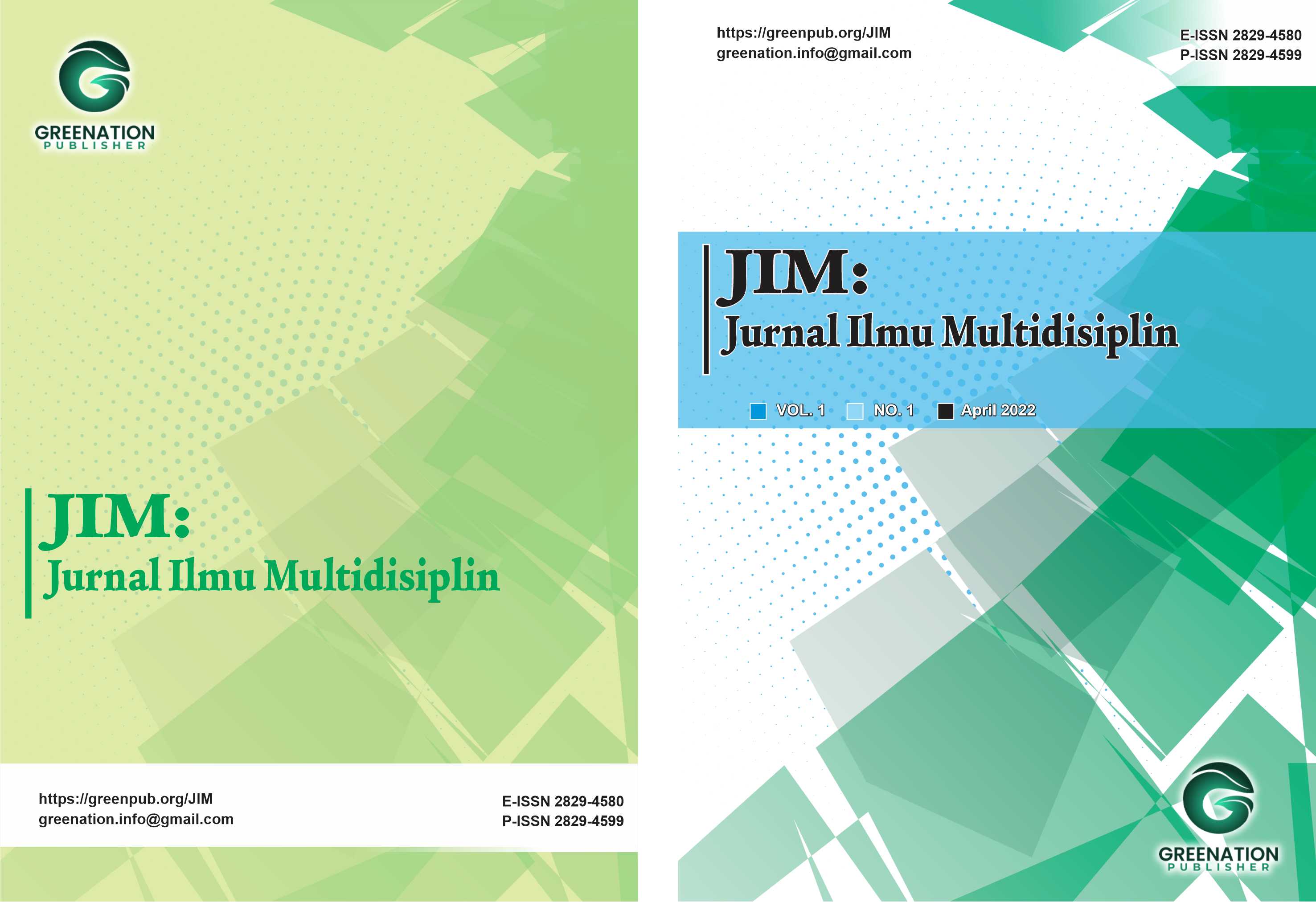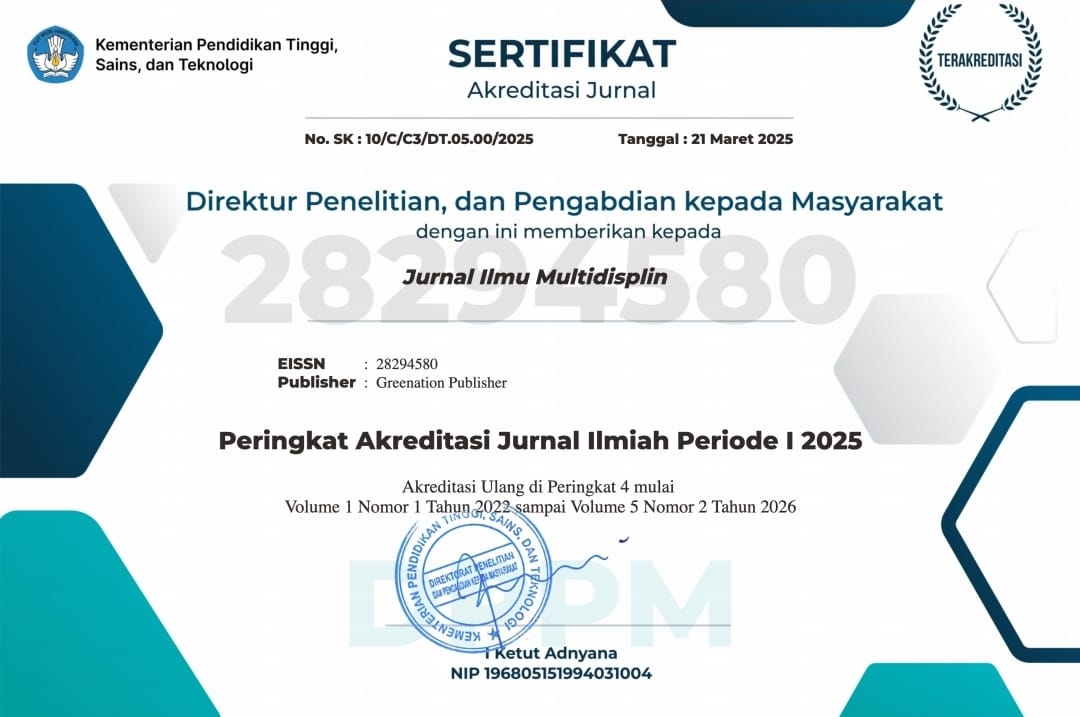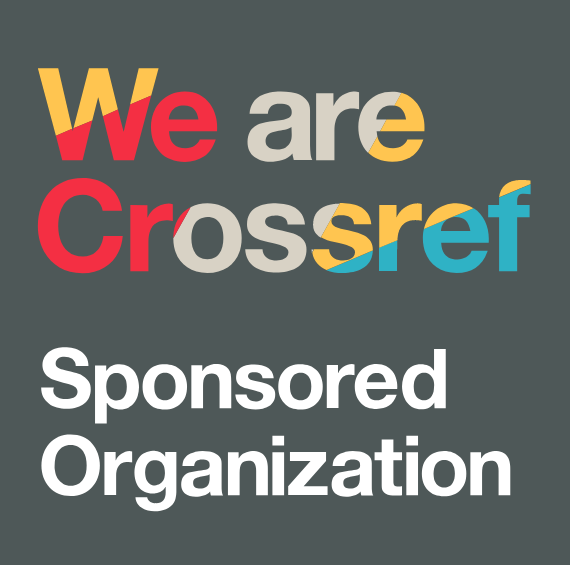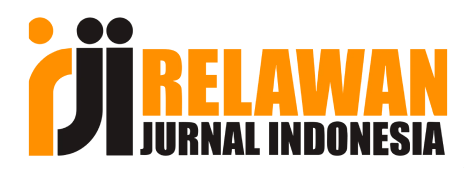Perancangan User Interface pada Website untuk Digitalisasi Proses Bisnis Layanan Menejemen Pendidikan di Sekolah Menengah Menggunakan Design Thinking
DOI:
https://doi.org/10.38035/jim.v4i3.1223Keywords:
Design Thinking, User Interface, E-learning, PendidikanAbstract
Digitalisasi dalam dunia pendidikan mendorong seluruhnya khususnya sekolah untuk beradaptasi dengan teknologi, termasuk dalam metode pembelajaran. Penelitian ini bertujuan untuk merancang desain user interface pada e-learning Sekolah Menengah Pertama X di Sidoarjo, yaitu dengan metode Design Thinking yang berfokus pada kebutuhan dan pengalaman pengguna. Proses penelitian dilakukan melalui lima tahap yaitu: empathize, define, ideate, prototype, dan test. Data memperoleh sebanyak 1 Kepala Sekolah, 1 Waka Kurikulum, 1 Staff TU, 123 Siswa dan 10 Guru melalui pendekatan dengan cara pengisian kuesioner dan wawancara, lalu melakukan pengujian menggunakan usability testing. Hasil menunjukkan bahwa desain user interface yang dirancang mampu menjawab keluhan pengguna terhadap metode pembelajaran saat ini yang kurang efisien. Desain e-learning yang dihasilkan bersifat ramah pengguna, mudah diakses, dan memudahkan seluruh pengguna khususnya staff TU, Guru, dan Siswa dalam kegiatan belajar mengajar. Penelitian ini menunjukkan bahwa dengan melakukan pendekatan pengguna sejak awal, dapat menghasilkan solusi yang relevan dan efektif untuk mendukung proses pendidikan.
References
Anderson, T., & Elloumi, F. 2004. Theory and Practice of Online Learning. Athabasca University Press. https://www.aupress.ca/books/120146-theory-and-practice-of- online-learning/
Beltagui, A., 2018. A design-thinking perspective on capability development: The case of new product development for a service business model. International Journal of Operations & Production Management.
Brown, T. 2009. Change by Design: How Design Thinking Creates New Alternatives for Business and Society. Harvard Business Press.
Creswell, J. W. 2014. Research Design: Qualitative, Quantitative, and Mixed Methods Approaches (4th ed.). SAGE Publications.
Dam, R. F., & Siang, T. Y. 2021. What is Design Thinking? The Interaction Design Foundation. https://www.interaction-design.org/literature/article/what-is-design- thinking-and-why-is-it-so-popular
Darmawan, I., Anwar, M. S., Rahmatulloh, A. & Sulastri, H., 2023. Design Thinking Approach for User Interface Design and User Experience on Campus Academic Information Systems. International Journal on Informatics Visualization.
Daryanto, & Karim, S. 2017. Pembelajaran Abad 21. Gava Media.
Guldmann, E., Bocken, N. & Brezet, H., 2019. A Design Thinking Framework for Circular Business Model Innovation. Volume 7.
K. & Cantona, E., 2023. Redesign Website E-Learning Universitas Universal Dengan Pendekatan Design Thinking. Digital Ecosystem for Natural Sustainability, Volume 3.
Karlina, D. & Indah, D. R., 2022. Perancangan User Interfacedan User ExperienceSistem Informasi E-learningMenggunakan Design Thinking. Teknik Informatika dan Sistem Informasi, Volume 8.
Krishnavarty, A. A., Defriani, M. & Hermanto, T. I., 2022. UI/UX Design for Language Learning Mobile Application Chob Learn Thai Using the Design Thinking Method. Jurnal dan penelitian Teknik Informatika, Volume 7.
Laksono, Y. & Islam, A., 2020. PENERAPAN DESIGN THINKING DENGAN MENGGUNAKAN GAYA DESAIN MONOLINE PADA PERANCANGAN LOGO D’PAPO SURABAYA. Jurnal S1 Desain Komunikasi Visual, Volume 1, pp. 261- 274.
Liu, S. & Li, C., 2023. Promoting design thinking and creativity by making: A quasi- experiment in the information technology course. Thinking Skills and Creativity, 49(Elsevier).
Liu, Y.-L., Lee, P. & Huang, Y., 2023. Enhancing university students’ creative confidence, learning motivation, and team creative performance in design thinking using a digital visual collaborative environment. 50(Elsevier).
Miarso, Y., 2007. Menyemai benih teknologi pendidikan. 1 penyunt. s.l.:Prenada Media Gro.
Mucjal, A., Mahardika, G. & Suranto, B., 2021. Perancangan Ivent: Aplikasi berbasis Android dengan pendekatan Design Thinking. 2(Universitas Islam Indonesia).
Mulyasa, E., 2010. Menjadi Guru Profesional (Menciptakan Pembelajaran Kreatif dan Menyenangkan). Cet. 9 penyunt. Bandung: Bandung Rosda.
Muotka, S., Togiani, A. & Varis, J., 2023. A Design Thinking Approach: Applying 5S Methodology Effectively in an Industrial Work Environment. 119(Elsevier), pp. 363- 370.
Nasution, W. S. L. & Nusa, P., 2021. UI/UX Design Web-Based Learning Application Using Design Thinking Method. Engineering and Technology, Volume 1.
Ní Shé, C., Costello, E., Brunton, J. & Farrell, O., 2022. Integrating design thinking into instructional design: The #OpenTeach case study. Australasian Journal of Educational Technology, Volume 1.
Ostrowski, S., Rolczy?ski, R. & Pniewska, J., 2015. User-friendly E-learning Platform: a Case Study of a Design Thinking Approach Use. Faculty of Management and Economics.
Plattner, H., Meinel, C., & Leifer, L. (2011). Design Thinking: Understand – Improve –Apply. Springer.
Prawiradilaga, W. 2016. Desain dan Pengembangan Teknologi Pembelajaran. Kencana.
Razi, A., Mutiaz, I. & Setiawan, P., 2018. PENERAPAN METODE DESIGN THINKING PADA MODEL PERANCANGAN UI/UX APLIKASI PENANGANAN LAPORAN KEHILANGAN DAN TEMUAN BARANG TERCECER. Jurnal Desain Komunikasi Visual, Manajemen Desain dan Periklanan, 3(Demandia).
Rusanty, D., Tolle, H. & Fanani, L., 2019. Perancangan User Experience Aplikasi Mobile Lelenesia (Marketplace Penjualan Lele) Menggunakan Metode Design Thinking. 3(Fakultas Ilmu Komputer, Universitas Brawijaya).
Rye, E. & Crites, K., 2020. Innovating language Curriculum Design through Design Thinking: A case study of a blended learning course at a Colombian University. System.
Santoso, S. (2017). Mengolah Data Statistik Secara Profesional dengan SPSS 25. PT Elex Media Komputindo.
Saputra, D. & Kania, R., 2022. Designing User Interface of a Mobile Learning Application by Using a Design Thinking Approach: A Case Study on UNI Couse. Journal of Marketing Innovation, Volume 2.
Satzinger, Jackson & Burd, 2011. Systems Analysis and Design in a Changing World. Sugiyono. 2017. Metode Penelitian Kuantitatif, Kualitatif, dan R&D. Alfabeta.
Sunarto. 2020. Penerapan Model Design Thinking dalam Pembelajaran. Jurnal Teknologi Pendidikan, 22(2), 105–117.
Siagian, S. 2019. Manajemen Pendidikan. Bumi Aksara.
Siahaan, S., 2008. MENGAPA HARUS MENGGUNAKAN E-LEARNING DALAM KEGIATAN PEMBELAJARAN?. Jurnal Teknodik, pp. 042-054.
Shirvanadi, E. & Idris, M., 2021. Perancangan Ulang UI/UX Situs E-Learning Amikom Center Dengan Metode Design Thinking (Studi Kasus: Amikom Center). Issue Universitas Islam Indonesia.
Tim Penyusun Modul Guru Belajar. (2020). Modul Pembelajaran Berbasis E-Learning. Kementerian Pendidikan dan Kebudayaan Republik Indonesia.
Tsai, C.-A., Song, M.-Y. & Lo, C.-C., 2023. Design thinking with constructivist learning increases the learning motivation and wicked problem-solving capability—An empirical research in Taiwan. Thinking Skills and Creativity, 50(Elsevier).
Yilmaz, G., 2021. Revitalizing the communication classroom: A case of design thinking. Communication Teacher.
Downloads
Published
How to Cite
Issue
Section
License
Copyright (c) 2025 Yumna Cahyaning Windrianto, Erma Suryani

This work is licensed under a Creative Commons Attribution 4.0 International License.
You are free to:
- Share— copy and redistribute the material in any medium or format
- Adapt— remix, transform, and build upon the material for any purpose, even commercially.
The licensor cannot revoke these freedoms as long as you follow the license terms.
Under the following terms:
- Attribution— You must give appropriate credit, provide a link to the license, and indicate if changes were made. You may do so in any reasonable manner, but not in any way that suggests the licensor endorses you or your use.
- No additional restrictions— You may not apply legal terms or technological measures that legally restrict others from doing anything the license permits.
Notices:
- You do not have to comply with the license for elements of the material in the public domain or where your use is permitted by an applicable exception or limitation.
- No warranties are given. The license may not give you all of the permissions necessary for your intended use. For example, other rights such as publicity, privacy, or moral rightsmay limit how you use the material.




























